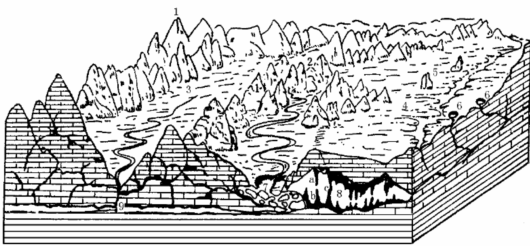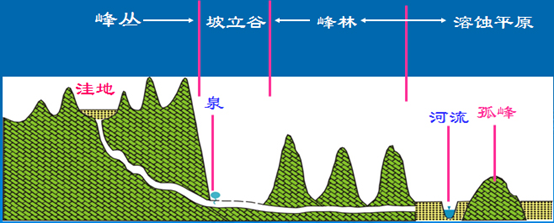Karst landform
It refers to various corroded, eroded and accumulated forms which are formed by soluble rocks (including carbonatite, sulphate rocks and chloride rocks) through the corrosion, erosion and gravitational collapse of surface water and underground water.
Types of karst landform
Karst landform is always with jagged rocks and large number of peculiar mountains on the earth’s surface, while densely distributed with underground rivers, and the stalactites in caves are colourful and varied.
The common surface karst landforms include positive landforms like clint, stone forest,fenglin,fengcong and hills, etc.; negative landforms include lapie, hoje, sinkhole, blind valley, dry valley, and depression (including doline, basin), etc.; underground karst landforms include karst cave, underground river and underground lake; and the karst landforms closely related to the surface and underground include vertical shaft, light through cave, natural bridge and tiankeng, etc.
Schematic diagram for types of karst landforms
1. Fenglin; 2. Solution depression; 3. Karst basin; 4. Karst plain; 5. Isolated peak; 6. Karst doline; 7. Karst collapse; 8. Karst cave; 9. Underground river; a. Stalactite; b. Stalagmite; c. Column
Schematic diagram for surface karst landforms

















